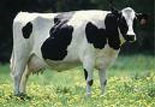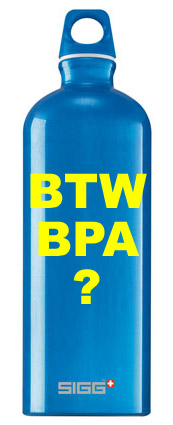Posts Tagged ‘ Aurora ’
Aurora Dairy: Either Moo-ve Out of Organic Market or Comply with Standards
September 2nd, 2009. By janem
 Most everyone knows that buying organic anything is pricier, including milk. And we know how difficult and expensive it is for family dairy farmers to convert their farms to organic.
Most everyone knows that buying organic anything is pricier, including milk. And we know how difficult and expensive it is for family dairy farmers to convert their farms to organic.
The big guns have also jumped on the organic wagon– much to the dismay of small, indie farms because a national surplus of organic milk largely created by these factory farm dairies has been driving down prices paid to farmers. And what we didn’t know is that they aren’t all playing by the rules.
This week the Cornucopia Institute, an organic industry watchdog, filed a formal legal complaint with the United States Department of Agriculture (USDA) alleging that one of the five industrial-scale dairies operated by Aurora, its High Plains dairy near Kersey, Colorado, is failing to graze their dairy cattle as required by the federal organic standards.
According to Cornucopia Institute, Aurora is allegedly primarily confining their dairy cows in giant barns and pens instead of being allowed to graze on fresh forage, and exhibit their natural instinctive behaviors, as the federal law mandates. When the cows are let outside they often only have access to substandard crops that are planted on an annual basis, and wither in the desert-like heat, instead of more hardy perennials that stand up to continual grazing throughout the growing season.
In response to a previous legal complaint filed in 2006 by The Cornucopia Institute, the USDA found that Aurora was in violation of 14 tenets of the organic regulations including confining their cattle to feedlots, instead of grazing.
Wake up, USDA! If I were buying Aurora Dairy’s supposed organic milk, I’d want my Moo-ney back.
Greenscam! Sigg bottles, Aurora organic milk not what they say?
September 1st, 2009. By AbiK
 The horror! Eco-consciousness without conscience! In an industry that thrives on consumer trust, what happens when that trust is comprised by alleged greenscammers?
The horror! Eco-consciousness without conscience! In an industry that thrives on consumer trust, what happens when that trust is comprised by alleged greenscammers?
We’re about to find out. Enter Sigg bottles and Aurora Organic Milk…
Seems all too easy in today’s eco-conscious clime that if you can make it green, talk it up as friendlier, safer, healthier, more sustainable…you’ll have a hit with consumers. Particularly those with deeper pockets as going eco & organic ain’t cheap. Put your eco-friendly product in the right hands—red carpet types—and, like Sigg bottles, trendy cult status may be within reach.
But as with all glowing self-proclamations, stating publicly that you’re “organic” or “eco-conscious” leaves you open to scrutiny. And, trendy or not, Sigg bottles have found themselves in the cross-hairs of pissed off consumers who felt they were led to believe the bottles were BPA-free. Not helping is CEO Steve Wasik’s letter (sigg.com) stating that Sigg bottles produced before August, 2008 contain trace amounts of BPA.
BPA, or bisphenol A, is a potentially toxic substance found in plastics (such as some baby bottles), some dental sealants and linings of metal cans; it’s gained notoriety in recent years since a government panel raised concern in 2007 about BPA leaching from its source and, if ingested—particularly in children—there may be potential for neural and behavioral problems (usatoday.com, 1/30/08).
The initial issue with Sigg had been the issue of leaching; Sigg bottles apparently did not show Read the rest of this entry »
Archive by Category
- Accidents (24)
- Airlines (9)
- Asbestos Mesothelioma (262)
- Automotive (25)
- Celebrity (14)
- Class Action (84)
- Complaints/Comments (15)
- Consumer Fraud (84)
- Contest (2)
- Court of Public Opinion (5)
- Crazy Sh*t Lawyers See (61)
- Criminal Law (4)
- Defective Products (111)
- DePuy ASR Hip Recall (2)
- Discrimination (22)
- Drugs/Medical (248)
- Elder Care Abuse (4)
- Emerging Issues (462)
- Employment (54)
- Environment (52)
- Financial (28)
- Food Illness (15)
- Human/Civil Rights (4)
- Insecurities (5)
- Insurance (16)
- Intellectual Property (16)
- Internet/E-commerce (19)
- lawsuits (161)
- Lawyers (20)
- Lawyers Giving Back (43)
- Lex Levity (10)
- Personal Injury (106)
- Pleading Ignorance (53)
- Real Estate (2)
- Recall (6)
- Scam (3)
- Securities (13)
- Settlement (81)
- Tort Reform (2)
- Totally Tortelicious (81)
- Veterans (11)
- Whistleblower (9)